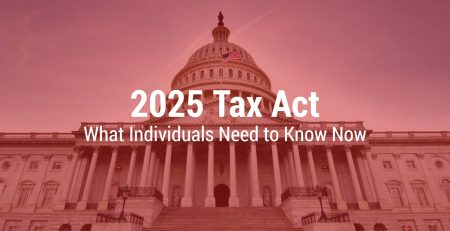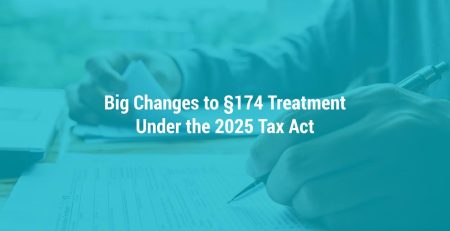What You Need to Know About Child & Dependent Credits
The recently enacted 2025 Tax Act brings significant enhancements to tax credits for families, making it more important than ever to understand how you can maximize your benefits. Here is what you need to know about the new rules for the following:
- Child Tax Credit (and the Credit for Other Dependents)
- Child & Dependent Care Tax Credit (CDCTC) and related dependent care benefit provisions
Because many of these changes become permanent or take effect beginning in 2025 or 2026, now is the time for families, especially those with children or dependents needing care, to plan strategically. Below is our breakdown — and planning suggestions — to help you make the most of these favorable tax changes.
Key Changes & High-Level Summary
Child Tax Credit / Credit for Other Dependents
- Starting in tax year 2025, the Child Tax Credit (CTC) per qualifying child is increased to $2,200 (up from $2,000), with future inflation adjustments.
- The CTC is now permanently made a part of the tax code, rather than being subject to expiration.
- The refundable portion of the credit is also increased and indexed for inflation, providing more cash back to eligible families.
- The existing phase-out thresholds for higher-income taxpayers remain: $200,000 (single) / $400,000 (married filing jointly).
- Both the taxpayer and each qualifying child must have a valid Social Security number issued before the tax return due date to claim the credit.
- The Credit for Other Dependents (COD) i.e., a $500 (non-refundable) credit for dependents who do not qualify for the CTC (for example, older children or certain parents) has been made permanent.
Effective Date:
These changes apply starting in 2025, i.e., for tax years beginning after 12/31/24.
Child & Dependent Care Tax Credit (CDCTC) and Dependent Care Benefits
- The credit’s maximum percentage rate of qualifying care expenses is raised from 35% to 50% (for lower-income filers) and is phased down for higher incomes.
- The credit percentage is reduced (but not below 35%) as AGI exceeds $15,000 and further reduced (but not below 20%) as AGI exceeds $75,000 ($150,000 for joint filers).
- The maximum qualified expenses remain $3,000 for one qualifying individual or $6,000 for two or more.
- The exclusion limit for employer-provided dependent care assistance / dependent care FSAs is increased: from $5,000 to $7,500 (or $3,750 for married filing separately).
Effective Date:
These changes apply starting in 2026, i.e., for returns beginning after 12/31/25.
The dependent care credit enhancements and increased FSA limits open the potential for greater tax relief for working families who incur care expenses — especially those in the middle-income brackets.
What Has Not Changed
- The age test and residency test for qualifying children under the CTC remain unchanged (i.e., under age 17 at end of year, live with taxpayer for over half the year, etc.).
- The interaction between the Dependent Care FSA and the CDCTC (i.e., expenses “used up” by FSA reduce what you can use for the credit) still holds.
- The CDCTC remains a nonrefundable credit, which means the credit can only reduce your tax liability, not generate a refund.
What Families Should Do Now: Strategic Planning Tips
Because some of the changes begin immediately (2025 returns) and others in 2026, proactive planning is key. Below are high-level recommendations:
- Ensure valid Social Security numbers for children and tax filers
If any child or spouse lacks a valid SSN, you may be disqualified from claiming the full CTC. Begin verifying eligibility now. - Monitor your tax position under the enhanced credits
Project whether you will have sufficient tax liability to fully use the non-refundable credits. For example, low-income families owing minimal tax may “lose out” on the full value of the credits. - Time your dependent care expenses
If there is flexibility in when you pay for care services (e.g., a portion of preschool or summer care), consider shifting some payments into 2026 to take advantage of the higher 50% credit. - Review dependent qualification and residency status
For borderline cases (e.g., children splitting time between households), ensure that the child meets the “live-with” and support tests under IRC rules, especially with the enhanced credit stakes. - Evaluate business owners or employers offering childcare
If you run a business or are an employer, consider whether offering an employer-provided childcare facility or childcare benefit may yield tax credits, especially under the new higher caps.
Bottom Line & Why This Matters
- The 2025 Tax Act locks in and enhances the CTC and COD, giving families more certainty and value beginning with the 2025 return.
- The dependent care credit enhancements and increased FSA limits (effective 2026) open the potential for greater tax relief for working families who incur care expenses — especially those in the middle-income brackets.
- Because not every household will be able to fully take advantage (due to the nonrefundable nature of the CDCTC and limits imposed by FSAs), smart planning — especially around timing, FSA use, and tax liability forecasting — can make a material difference.
Hungerford is Here to Help.
Navigating these new tax changes can be complex—but the potential savings are substantial. Reach out to Hungerford today to learn exactly how the 2025 changes will affect your situation and to develop a personalized tax strategy that maximizes your benefits.
Disclaimer: This blog post is for informational purposes only and does not substitute for personalized advice. Please consult your tax professional for guidance tailored to your situation.











